All products featured are independently chosen by us. However, SoundGuys may receive a commission on orders placed through its retail links. See our ethics statement.
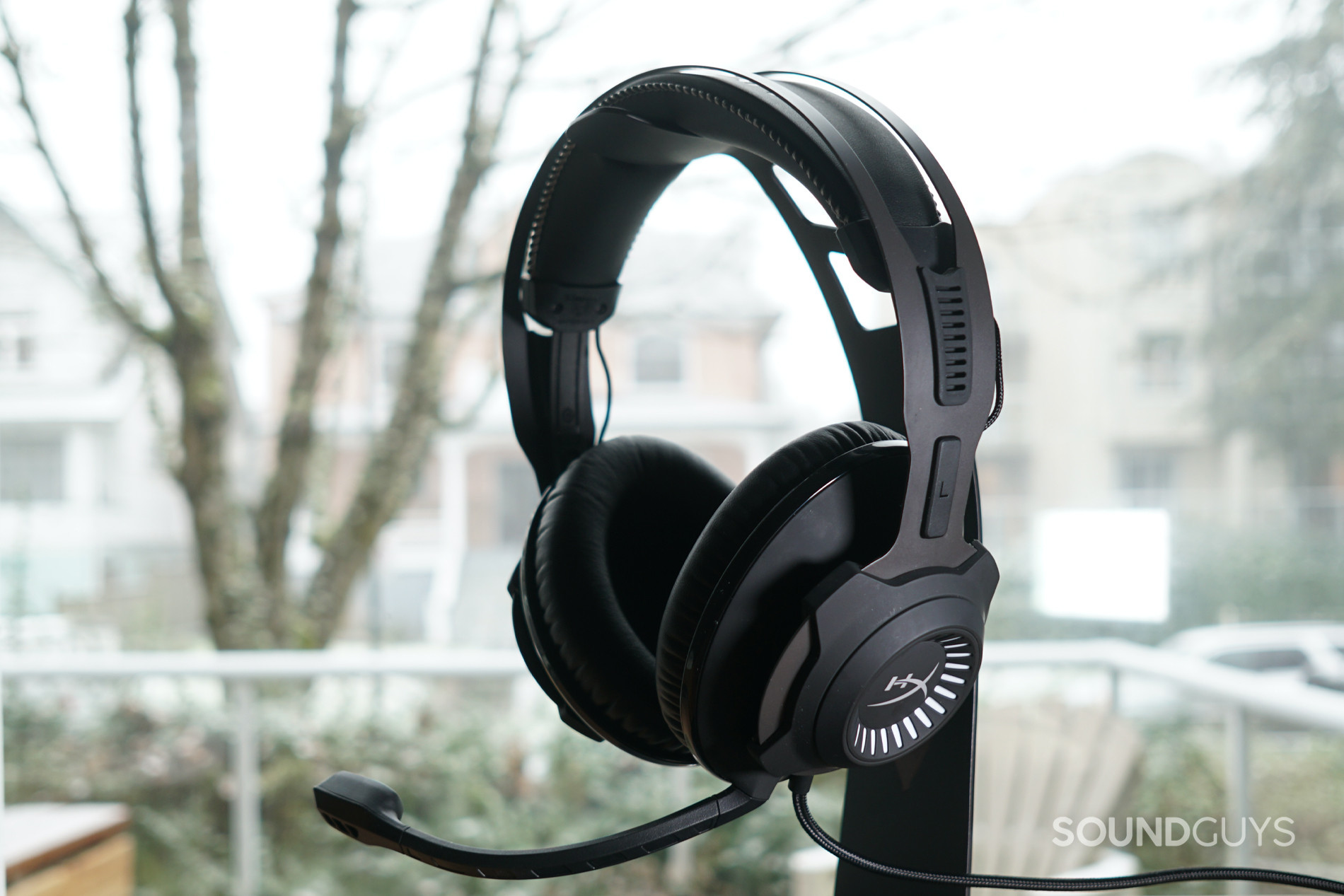
HyperX Cloud Revolver + 7.1 review
Published onFebruary 10, 2021
HyperX Cloud Revolver + 7.1
HyperX has put out some of the best gaming headsets on the market in the last few years, from relatively new arrivals like the Cloud II Wireless and Cloud Orbit S to perennial mainstays like the Cloud Alpha. The HyperX Cloud Revolver + 7.1 checks a lot of the same boxes as the company’s other great wired gaming headsets. This update to a headset from a few years ago brings together hardware-based 7.1 virtual surround sound, an all metal-build, and a suspension frame.
That may sound compelling, but as the saying goes, they can’t all be winners.
Who is the HyperX Cloud Revolver + 7.1 for?
- Gamers who want something with virtual surround sound that doesn’t need an app.
- Anyone looking for a straightforward wired gaming headset.
What is the HyperX Cloud Revolver + 7.1 like?
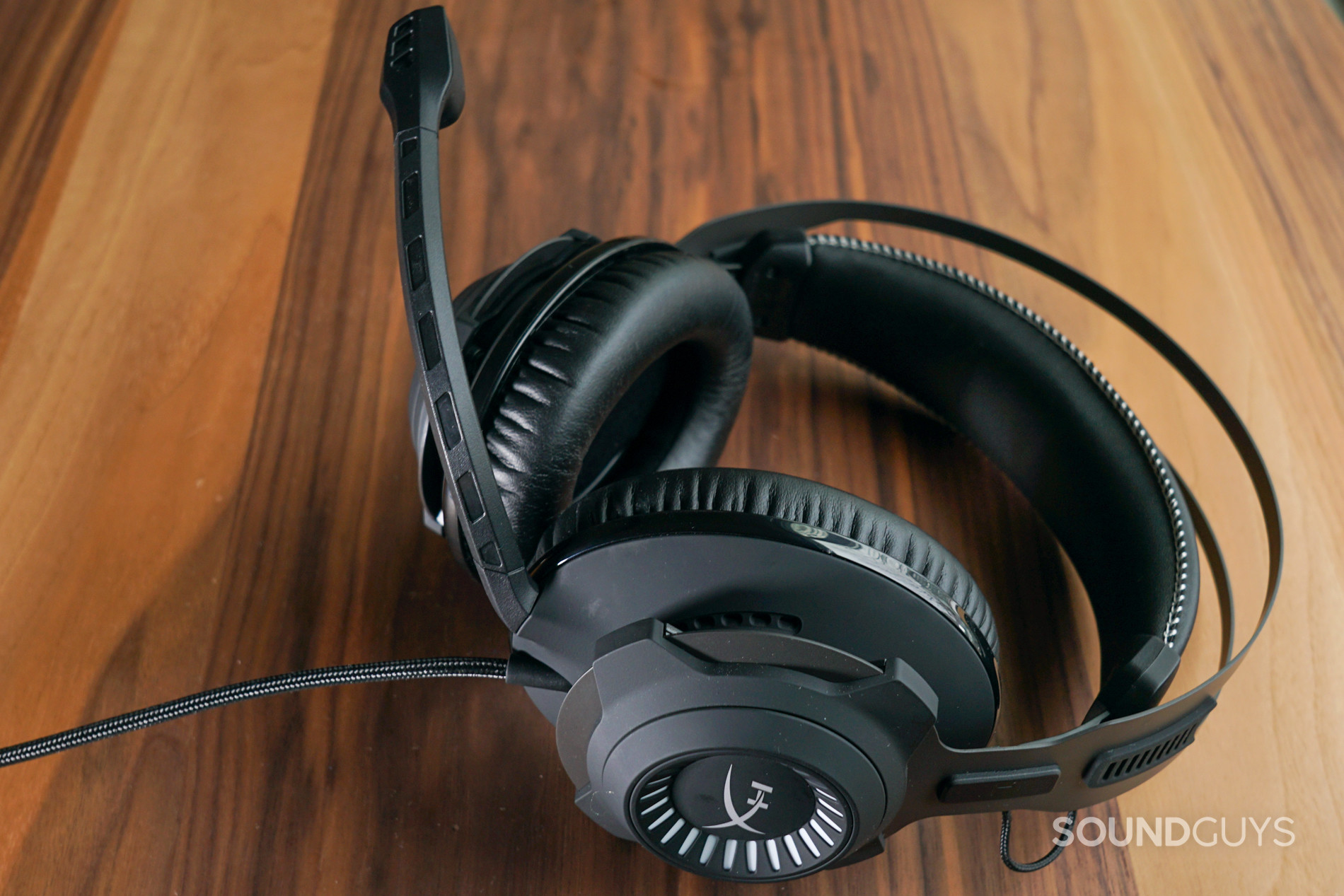
The HyperX Cloud Revolver + 7.1 is a wired gaming headset for PC, and just about any gaming console that accepts either USB or 3.5mm audio. Visually, it’s rather unique among HyperX gaming headsets, with a different color scheme, different headband design, and even different looking ear cups. If it weren’t for the HyperX moniker, you might mistake it for another brand altogether.
The HyperX Cloud Revolver features a steel suspension frame, with a leatherette-covered memory foam headband, meant to keep everything feeling lightweight. All that metal makes this a rather heavy gaming headset, at 392g, so finding the right way to balance everything is important. The ear pads are made of the same materials as the headband, and while they’re generally soft and make getting a decent seal rather easy, this isn’t exactly a comfortable headset. It’s all because of the headband.
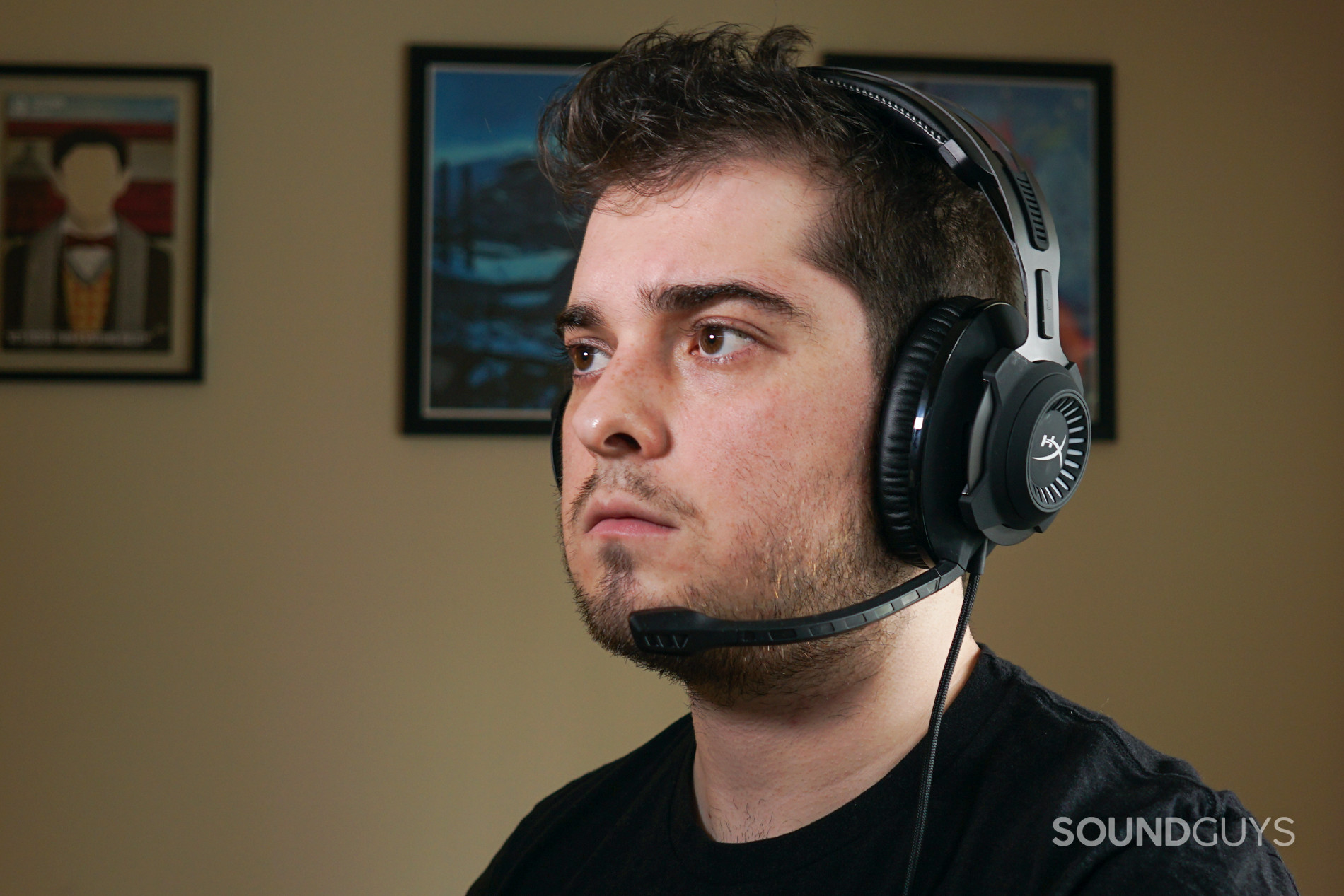
Suspension headbands have become pretty common in the gaming headset space—SteelSeries uses them in most Arctis headsets, and even Logitech has started releasing gaming headsets with them. The function of a suspension band is in the name: it suspends the headset above your head, keeping the weight off and reducing strain. This is where the problem lies with the HyperX Cloud Revolver + 7.1—its suspension band is far too loose, which means the band doesn’t really suspend anything, leaving the clamping force of the frame to do all of the work.
Ultimately the headset’s weight rests on its other primary point of contact with your head: your ears. Depending on the shape of your head, that could mean the top of your ears or the bottom (it’s the bottom for me), but regardless, this kind of weight can get uncomfortable fast. When I use this headset for even an hour it starts to put pressure on the point where my jaw connects to my head, and it’s not fun.
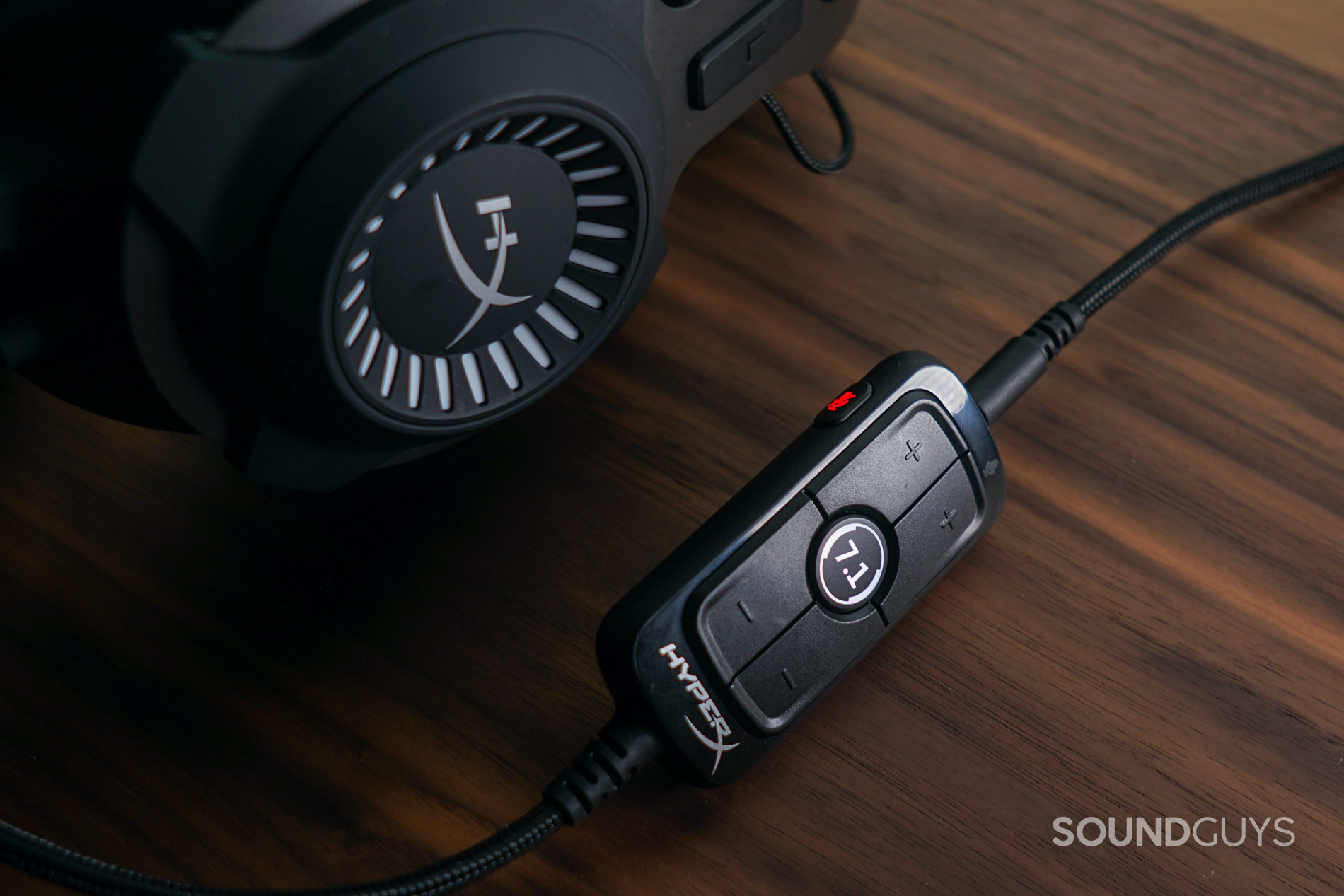
Outside of the comfort issues, this is actually a pretty easy gaming headset to use. The HyperX Cloud Revolver + 7.1 is wired, so it’s pretty much just a plug-and-play affair on every platform. The headset’s included USB adapter features a built-in soundcard for 7.1 virtual surround sound, as well as inline controls for mic and headphone volume. This is the only hardware-side volume control option for the headset, which isn’t an issue on PC. However, if you forgo the dongle so you can plug this gaming headset into a console controller, you’ll be stuck with whatever audio controls your chosen platform offers.
How is gaming with the HyperX Cloud Revolver + 7.1?
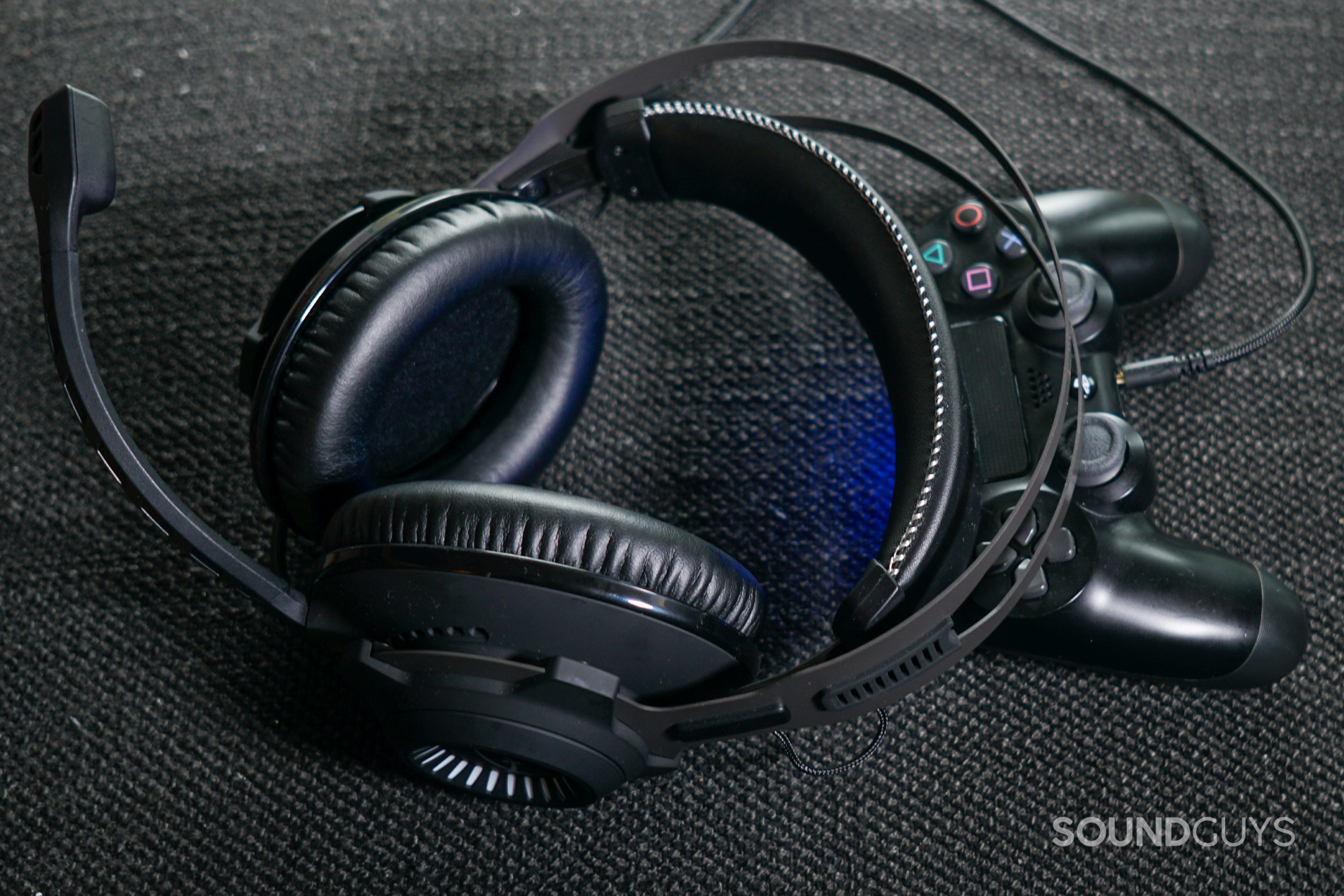
For the comfort reasons I mentioned earlier, the HyperX Cloud Revolver + 7.1 isn’t a great gaming headset for long periods of time, but it can get the job done in short bursts. This headset works with pretty much every gaming platform out there, from the PC, to the PlayStation 5, to the Xbox One, and beyond, but only consoles that support USB audio can use the included 7.1 surround sound feature. That’s not much of a problem for newer platforms like the PlayStation 5 and Xbox Series X, which support console-side surround sound, but you might be stuck trying to stretch a cord across your living room on PlayStation 4.
Nonetheless, the headset handles the audio demands of different kinds of games very well. The built-in 7.1 virtual surround sound works as well as any other version of the feature, ably reproducing directional audio in games like Apex Legends and Overwatch on PC. The headset also has no trouble with the mix of environmental audio, music, and battle noises that you find in stereo games like Final Fantasy XIV and Dauntless on PlayStation 4.
You really shouldn’t have much trouble with playing any kind of game with the HyperX Cloud Revolver + 7.1. What the headset’s gaming performance really comes down to is finding a comfortable position for it on your head.
How does the HyperX Cloud Revolver + 7.1 sound?
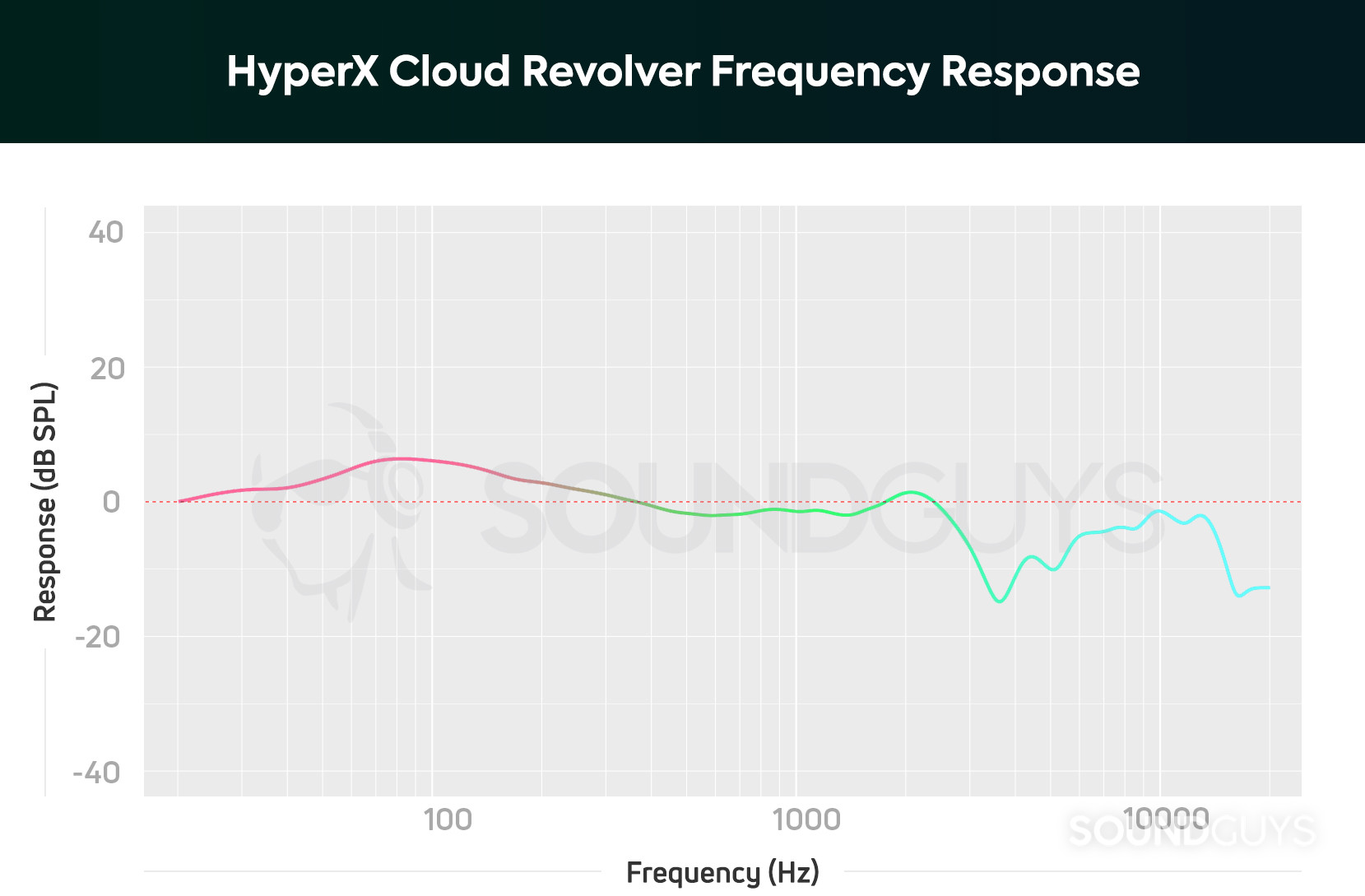
The HyperX Cloud Revolver + 7.1 offers pretty average audio output for a gaming headset. It features a lot of the inaccuracies typical to the product category, like boosted bass and high range sound that peters off past 3kHz.
A frequency response like this means electronic music and vocal-heavy music should sound pretty good, but you may find that some higher pitched sounds—things like cymbals, and some string instruments—come through a little less clearly. In Bang! by AJR, the drums and the vocals during the verses come through very clearly, but when the chorus starts the singer’s voice starts to get lost in the crush of different low-end sound—same goes for the electronic hi-hat sound that runs throughout the song.
You may find some higher-pitched sound struggles to keep up with lots of bass.
In game, audio output like this shouldn’t give you much trouble. You may find the boosted bass occasionally makes sounds, like footsteps, harder to hear in heated gunfights. However, the accurate midrange response should mean your friends come through nicely over voice chat.
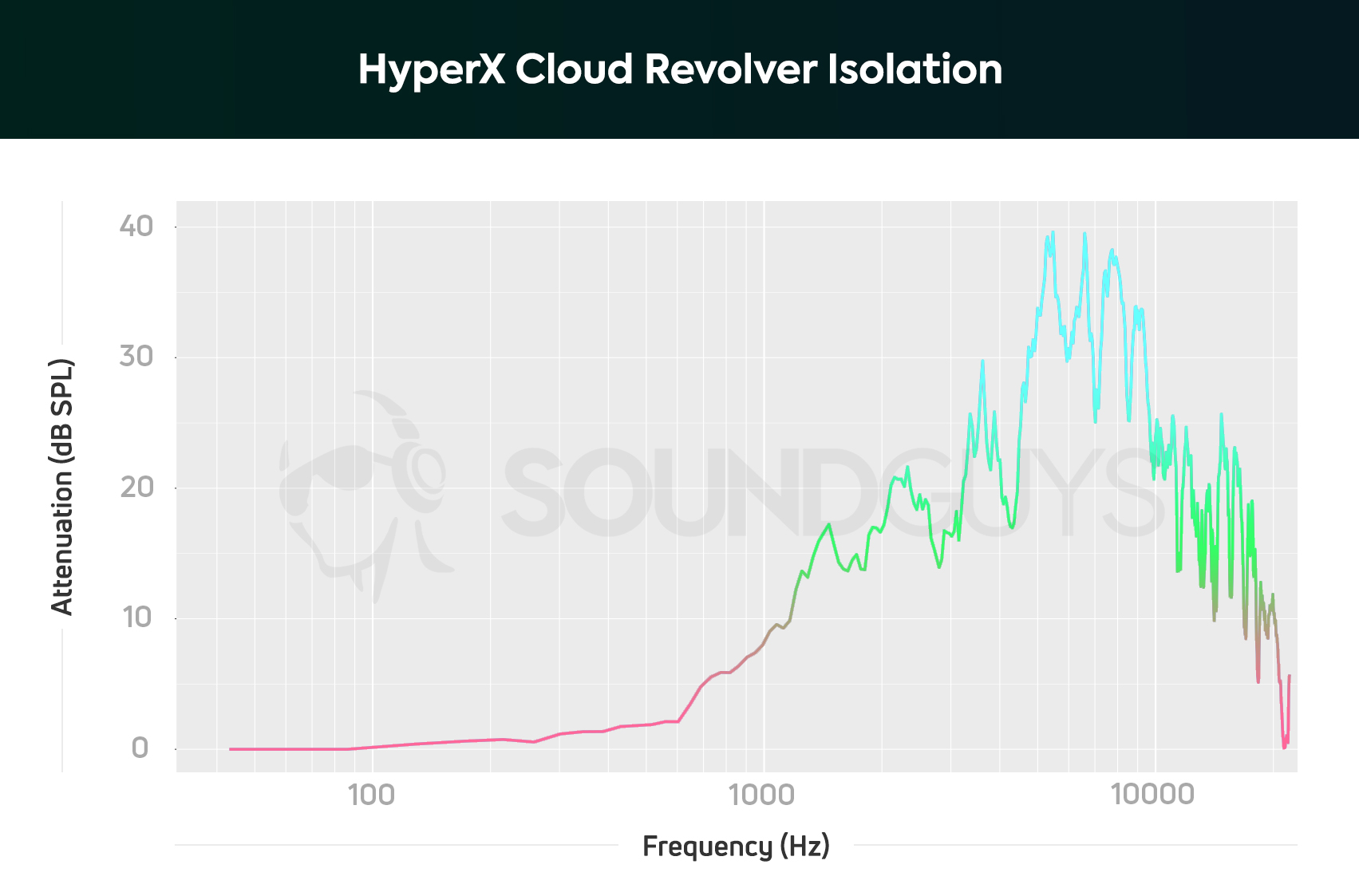
Even though the HyperX Cloud Revolver + 7.1 doesn’t fit all that comfortably, it still manages pretty decent isolation for a gaming headset. It’s no great shakes compared to the best on the market, but if you’re just playing at home, the sounds of a TV in the other room or the whir of a fridge shouldn’t present much distraction.
How is the microphone?
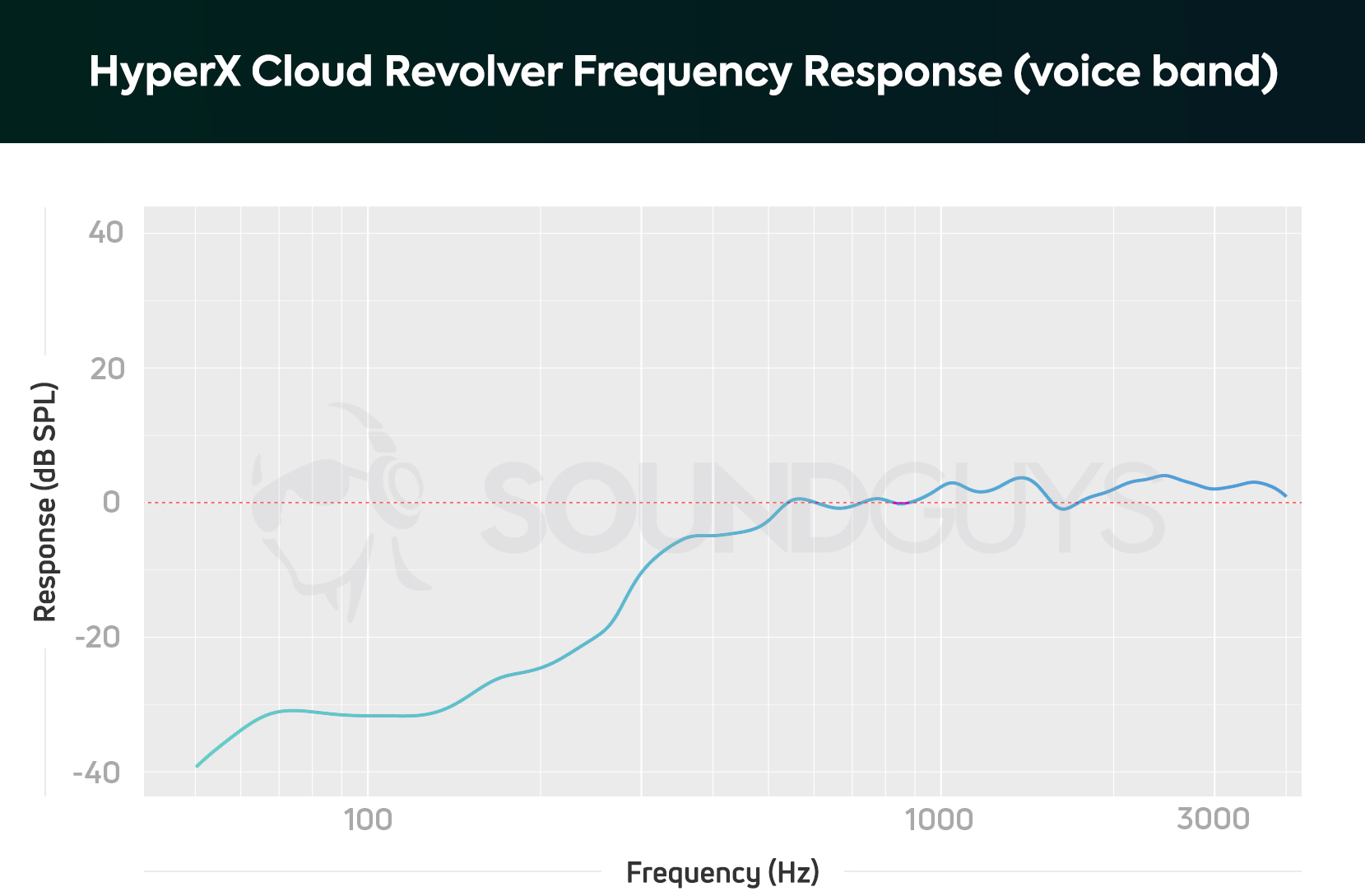
Much like its headphone audio and isolation performance, the HyperX Cloud Revolver + 7.1 microphone features pretty average audio output for a gaming headset mic. It features the typical drop-off in bass range output, which is meant to combat the proximity effect, where low-end sound too close to the microphone blows everything out, but it can also make people with deeper voices sound a little quieter than they otherwise would. The de-emphasis doesn’t sound as extreme as it looks in the chart, but it’s still something to bear in mind. Have a listen for yourself:
How does the microphone sound to you?
Should you buy the HyperX Cloud Revolver + 7.1?
Given the relatively high price and the uncomfortable design, it’s hard to recommend buying the HyperX Cloud Revolver + 7.1.
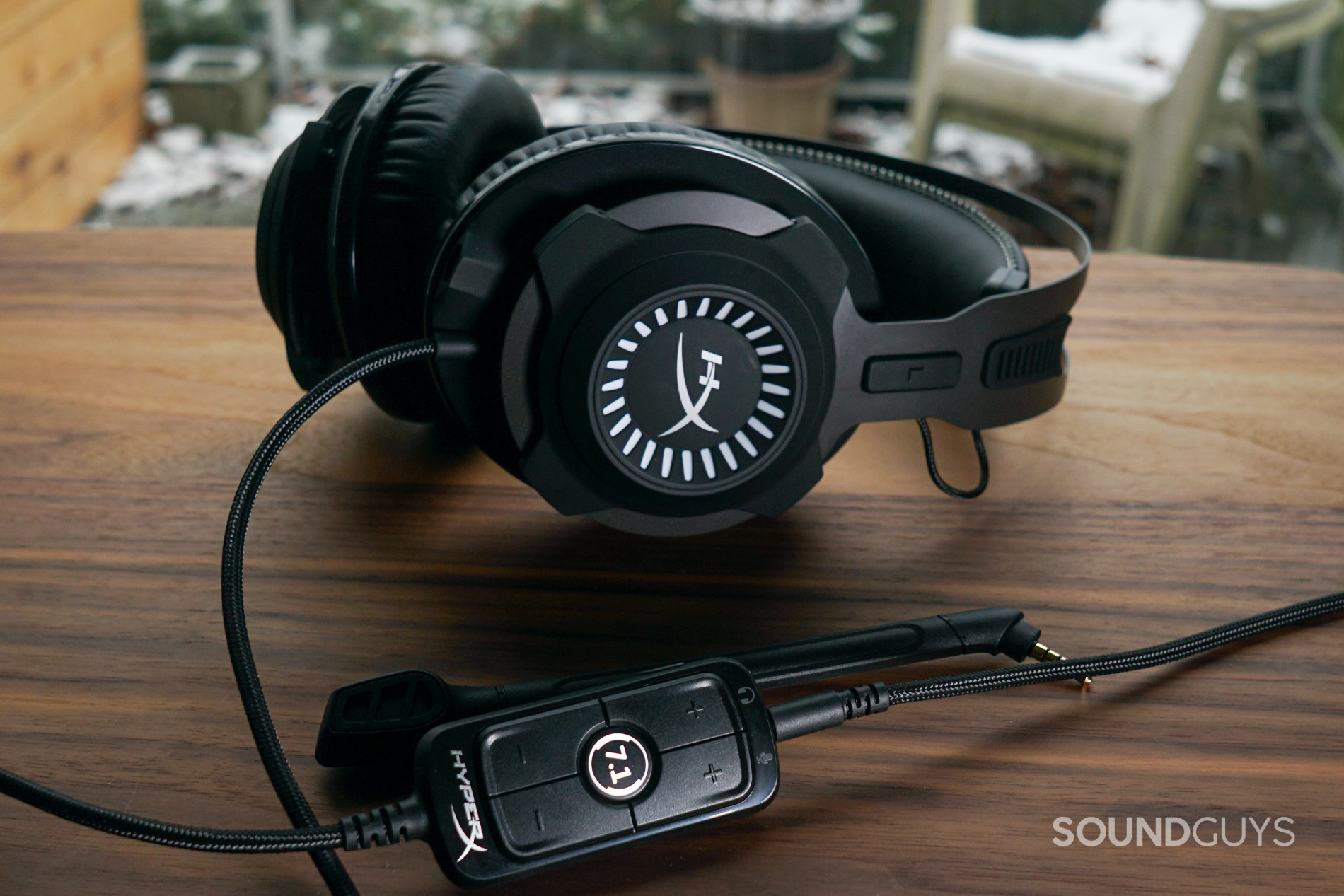
On paper at least, this is a good gaming headset. It’s easy to use pretty much everywhere, it sounds alright, and it doesn’t require any additional software. However, it’s just too hard to get around the fact that the HyperX Cloud Revolver + 7.1 isn’t comfortable—the suspension band is too loose to serve its own purpose, and the clamping force of the frame only exacerbates the issue. If it’s your only option, this’ll do, but there are plenty of fantastic alternatives for the same price or less.
The HyperX Cloud Revolver + 7.1 is a great example of how single aspect of a design can affect everything. Great audio doesn’t matter when an uncomfortable or improper fit gives you a headache.

What should you get instead of the HyperX Cloud Revolver + 7.1?
For $50 USD less than the Cloud Revolver, the Razer BlackShark V2 offers all the same features and more, in a far more comfortable and lightweight build, with best-in-class isolation. The HyperX Cloud Alpha S retails for the same price as the Cloud Revolver and offers a range of improvements over it. Plus, there are plenty of wireless options that cost less and cover all the same bases, like the SteelSeries Arctis 7, Logitech G733, and Turtle Beach Stealth 700 Gen 2.